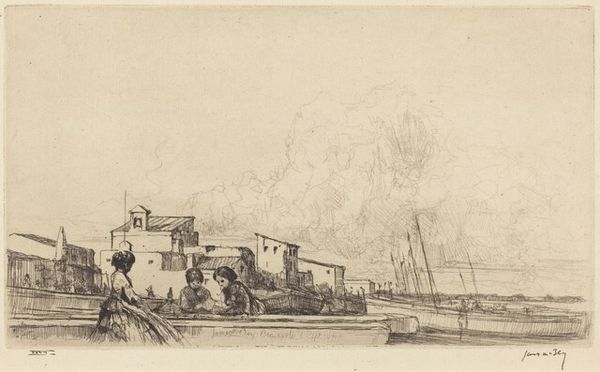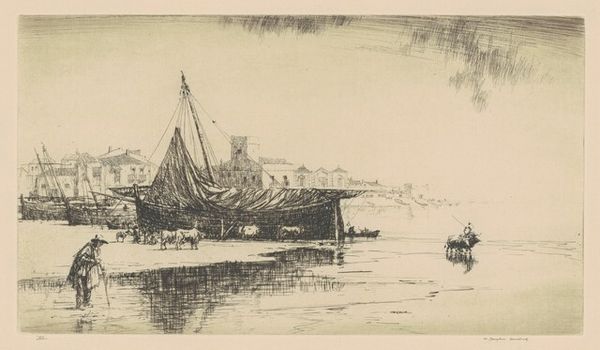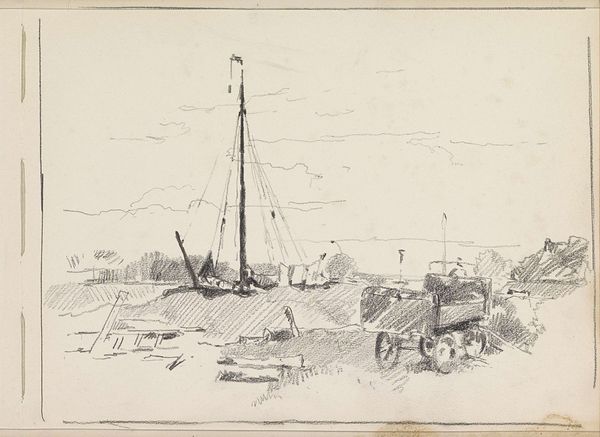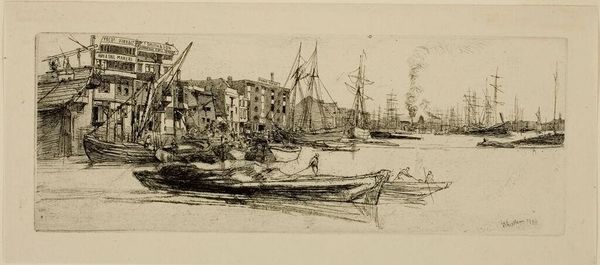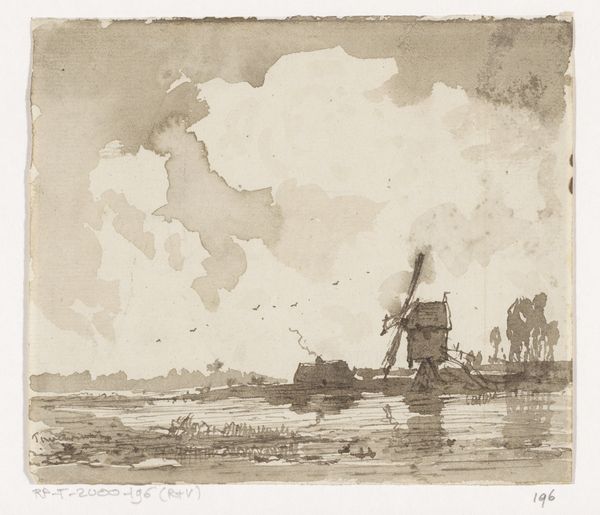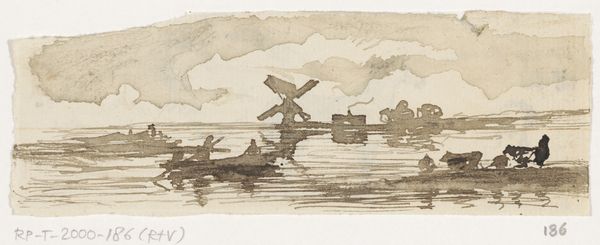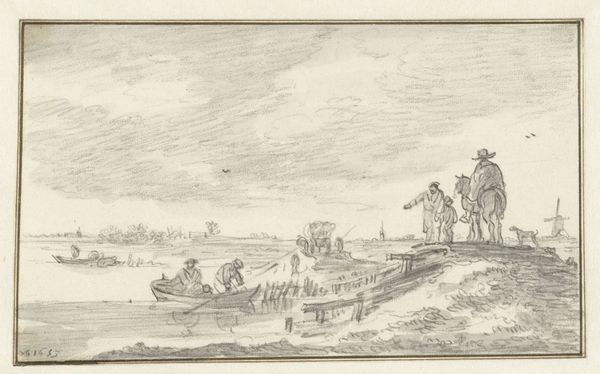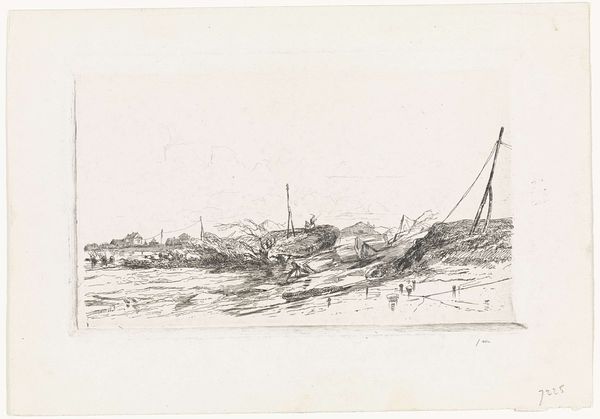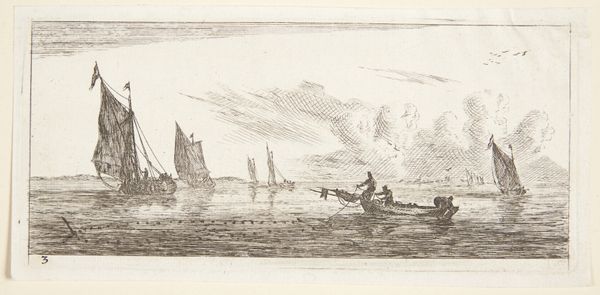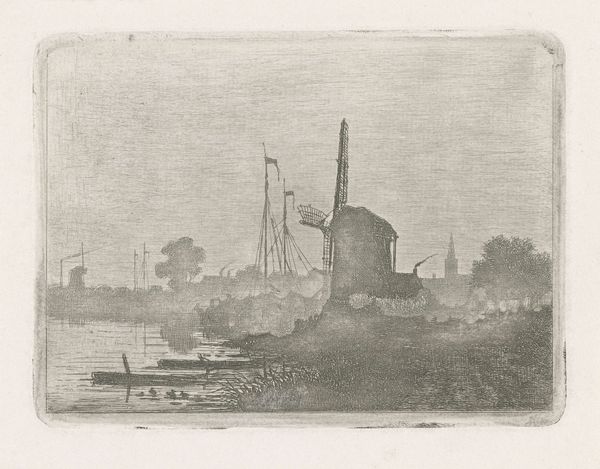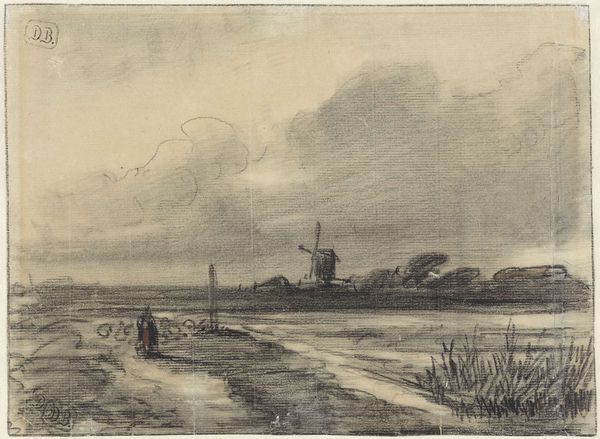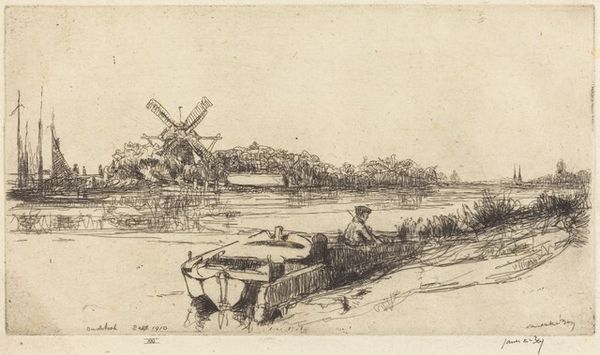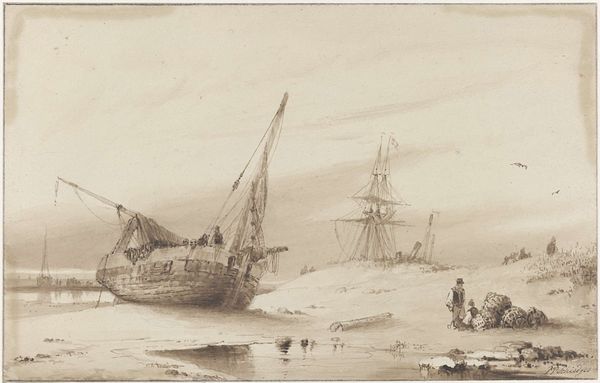
drawing
#
landscape illustration sketch
#
drawing
#
light pencil work
#
pen sketch
#
incomplete sketchy
#
personal sketchbook
#
ink drawing experimentation
#
pen-ink sketch
#
sketchbook drawing
#
watercolour illustration
#
sketchbook art
Dimensions: overall (approximate): 18.7 x 40.5 cm (7 3/8 x 15 15/16 in.)
Copyright: National Gallery of Art: CC0 1.0
Curator: The first impression is striking – the linear nature creates an ephemeral record of labor. It's captivating in its simple rendering of hard work and life in what looks to be a coastal setting. Editor: Indeed. What we’re seeing here is James McBey’s 1911 drawing "Vinaroz," executed in pen and ink, showcasing a bustling shipyard scene. It speaks volumes about the economy and maritime activities of its time, doesn’t it? Curator: Absolutely. Look closely, and you can see the processes. The application of ink delineates shapes, the various types of boats being worked on. What materials would they be sourcing, who would be the craftspeople, how are skills transferred between generations? This scene captures a snapshot of the labour that defined this society. Editor: Right. McBey was keenly aware of representing social dynamics through his art. It's quite fascinating to consider where this was displayed originally and what social classes would have viewed it. Curator: Good point. The light washes of colour invite us, the viewer, to feel part of this world. McBey could have heightened contrast in some areas, but, as it is, it feels like an invitation to engage in a direct dialogue between the scene, artist, and observer. Editor: Precisely! Consider how prints like this circulated. It offered people from different stations access to a depiction of Vinaroz, even if they couldn’t travel there. This in turn influences people's understanding of places, and professions in that location. It has real socio-political impact. Curator: McBey is deliberately drawing our attention to manual processes. The smoke from the furnace becomes a type of active ingredient of the whole composition, not just the boats being created but the culture of their creation. Editor: A tangible rendering of an abstract subject – that cultural exchange, the culture of labour that comes out of shared practices of building the economy. It’s certainly worth contemplating. Curator: Well, examining the materiality, the medium itself highlights the process, even more effectively allowing access to an intimate rendering. I found new things to think about by slowing down and giving my full attention to these strokes. Editor: And seeing it like this, presented in a public collection, invites reflection on the value we assign to labour and place. Thank you for bringing us on this fascinating exploration.
Comments
No comments
Be the first to comment and join the conversation on the ultimate creative platform.
